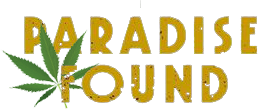Step aside, psilocybin: A new shroom is in town.
According to a new study by researchers at the University of California (UC) San Diego’s Herbert Wertheim School of Public Health and Human Longevity Science, the use of Amanita muscaria mushrooms has surged in the U.S. based upon Google searches.
The research indicates Google searches increased by 114 percent from 2022 to 2023, according to a study published June 10 in the American Journal of Preventive Medicine. The study was written by lead author Eric Leas, as well as Nora Satybaldiyeva, Wayne Kepner, Kevin H. Yang, Raquel M. Harati, Jamie Corroon, and Matthieu Rouffet, of UC San Diego.
Interest in the mushroom is growing each year. “Interest in psilocybin-containing mushrooms is increasing in the U.S., with 12.3% of U.S. adults reporting use of psilocybin-containing mushrooms in 2022, up significantly from 11.4% in 2021,” the study reads. “This makes psilocybin-containing mushrooms the most commonly used hallucinogenic substance. This growing interest in psilocybin-containing mushrooms has also sparked a new commercial market for other types of mushrooms.”
Like psilocybin mushrooms, which are not closely related, Amanita muscaria mushrooms, or Fly Agaric mushrooms, also have psychotropic effects: weightlessness, visual and auditory hypersensitivity, space distortion, unawareness of time, and hallucinations, however amanitas tend to be slightly more poisonous.
UC San Diego Today reports that the study shows people are taking more amanitas, perhaps without being equipped with the knowledge of doing so. Researchers noted, however, that mushrooms like psilocybin have a place in therapy, but that people should do so safely.
Since amanitas are legal in most states (not you, Louisiana), they’re becoming popular and researchers think it’s due to the rise in popularity of psilocybin.
“There is a lot of interest in the therapeutic potential for psilocybin and for good reason. But at the same time, a growing industry may be trying to capitalize on this interest by marketing other mushrooms. For example, some manufacturers are calling Amanita muscaria products ‘magic mushroom gummies’ and not disclosing what mushroom they contain, or not making it clear Amanita muscaria is a different mushroom than psilocybin and has essentially no clinical evidence supporting its use as a therapy,” said Eric Leas, Ph.D., M.P.H., assistant professor in the UC San Diego Herbert Wertheim School of Public Health and Human Longevity Science and senior author on the paper.
The psychotropic effects are produced by compounds, mostly muscimol and ibotenic acid, its biosynthetic precursor.
Researchers stressed that amanitas behave totally differently than psilocybin. Amanitas are a depressant, for instance.
“There may be some pharmaceutical potential to Amanita muscaria, but muscimol does not have the same effects on the body as psilocybin, so it probably would not have the same treatment applications if it ever went through drug development. For this reason, it is misleading not to clearly distinguish between muscimol and psilocybin. If someone is consenting to a psychedelic experience, they have a right to know what substance they are taking and receive accurate information about its potential health benefits and health risks.”
For the most part, what researchers are seeing is that safety protocols are mostly being ignored and the only thing you may find is a supplement-like list of ingredients. Researchers were unable to find any evidence that safety measures were taken.
“We have found that many manufacturers use supplement labeling, including ‘Supplement Facts’ panels,” said Leas. “However, there is a process for bringing a supplement to market that involves presenting safety data and filing an application, and we cannot find any evidence that any of these manufacturers have gone through this process, and this makes the current products sold in this manner illegal.”
Active compounds in amanitas are no toy, researchers said, and could affect certain people adversely.
“In my view, if a manufacturer wanted to develop a dietary supplement from Amanita muscaria, the application probably would not be approved because of muscimol and ibotenic acids’ inherent risks,” he added. “But right now it is the ‘Wild West,’ and companies are profiting from delayed enforcement while putting consumers at risk.”
High Times has reported on the effects and history of amanitas several times before.
Beginning in the December, 1976 issue of High Times, writer Tom Robbins explored amanitas and the books that inform readers about them. Then again in the December, 1979 issue of High Times, writers examined the connections between Santa Claus and a specific kind of psychedelic mushroom known as the fly agaric, aka the toadstool that conquered the universe. In fact, the mythology behind Santa could be related to a shaman in Lapland who ate Amanita muscaria.
Until more is known about amanitas, researchers urge caution for those exploring its active compounds.
The post Rise in Amanita Muscaria Shroom Use Worries Researchers first appeared on High Times.
